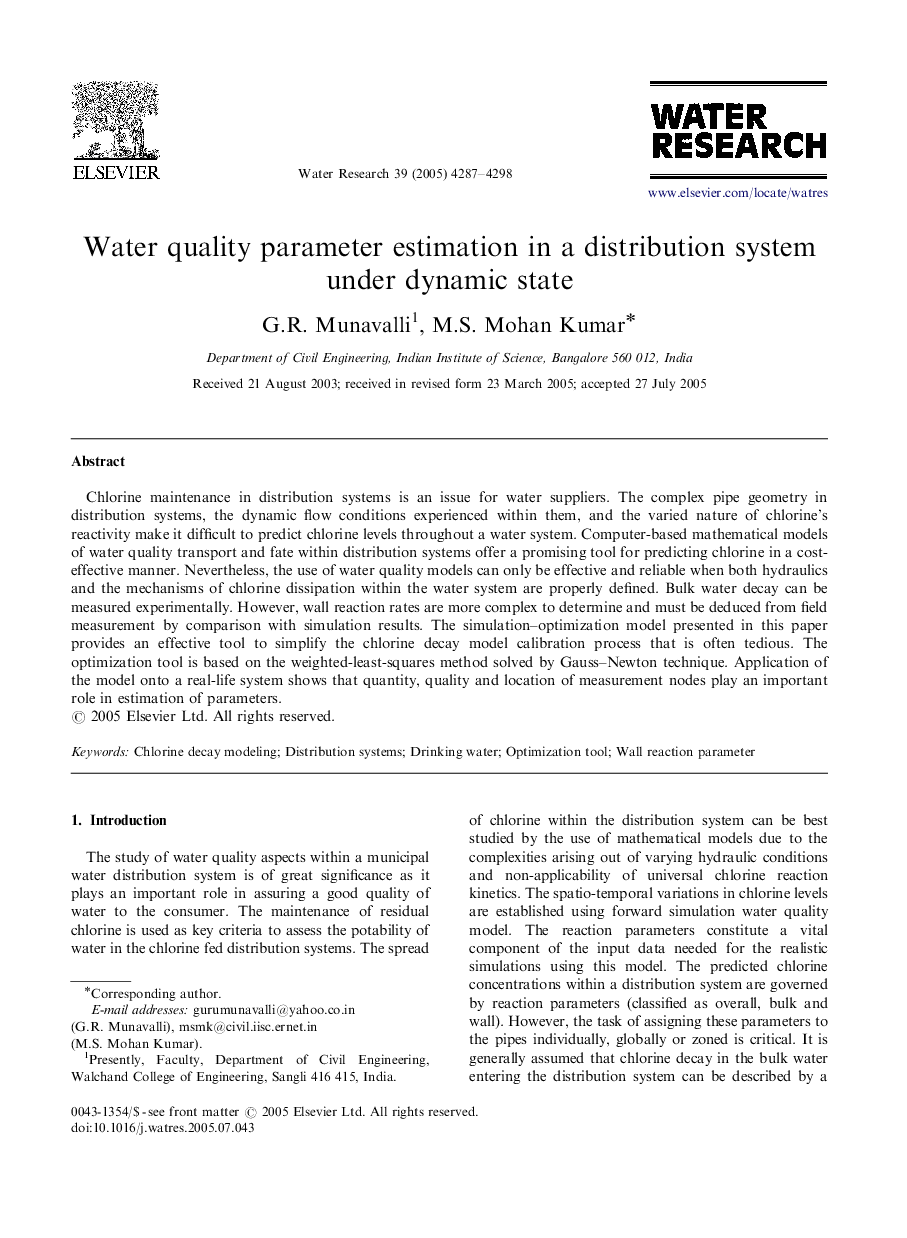| Article ID | Journal | Published Year | Pages | File Type |
|---|---|---|---|---|
| 4486700 | Water Research | 2005 | 12 Pages |
Chlorine maintenance in distribution systems is an issue for water suppliers. The complex pipe geometry in distribution systems, the dynamic flow conditions experienced within them, and the varied nature of chlorine's reactivity make it difficult to predict chlorine levels throughout a water system. Computer-based mathematical models of water quality transport and fate within distribution systems offer a promising tool for predicting chlorine in a cost-effective manner. Nevertheless, the use of water quality models can only be effective and reliable when both hydraulics and the mechanisms of chlorine dissipation within the water system are properly defined. Bulk water decay can be measured experimentally. However, wall reaction rates are more complex to determine and must be deduced from field measurement by comparison with simulation results. The simulation–optimization model presented in this paper provides an effective tool to simplify the chlorine decay model calibration process that is often tedious. The optimization tool is based on the weighted-least-squares method solved by Gauss–Newton technique. Application of the model onto a real-life system shows that quantity, quality and location of measurement nodes play an important role in estimation of parameters.
